Before you study this topic; you are adviced to study
Define Congruence / Congruent
Congruent Triangles
Corresponding Parts of Congruent Triangles
SSS rule of Congruence illustrates that, if three sides of a triangle are equal to the three corresponding sides of another triangle; then both the triangle are said to be congruent.
Example: In the below diagram:
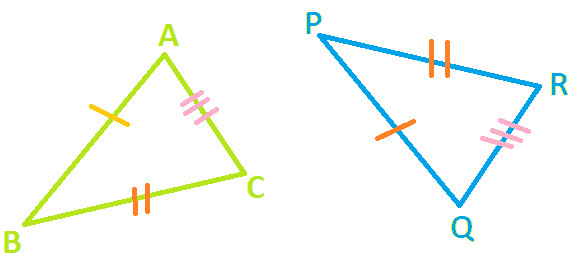
Line AB = Line PQ
Line BC = Line PR
Line AC = Line QR
We can notice that three lines of △ ABC are equal to three corresponding sides of △ PQR.
Therefore, here apply SSS Rule of Congruent and △ ABC is congruent to △ PQR.
And corresponding relationships is as:
A ↔ Q
B ↔ P
C ↔ R
Hence, △ ABC ≅ △ QPR
Justification / To Prove SSS Congruency Rule
Now, let's justify or proof of SSS Rule of Congruence with the help of following three checks:
Check 1:
There is a given triangle XYZ and length of one of its side XY is equal to 5cm. You are asked to construct a triangle ABC congruent to triangle XYZ.
Can you do that ??
With length of one side given i.e. 5cm, following three types of triangles can be formed:
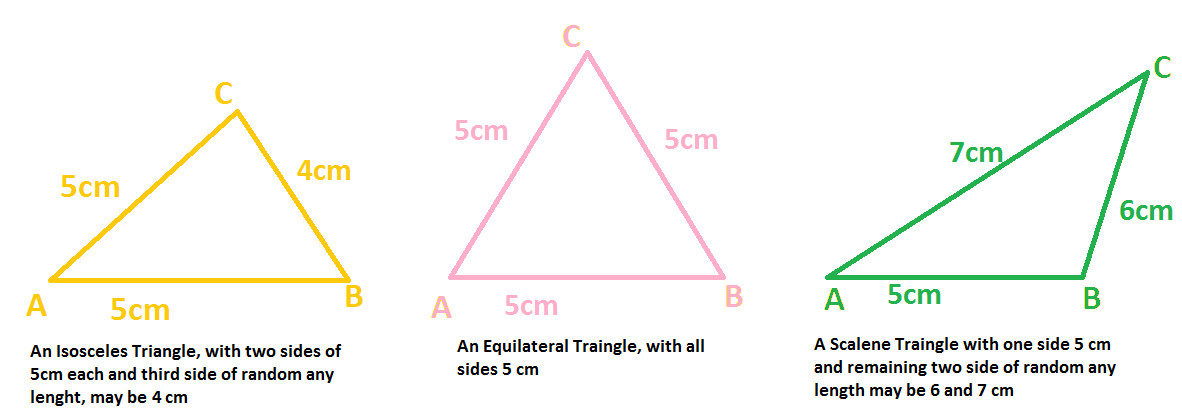
From the above diagram of three triangles, you can observe that given triangle XYZ can be any of the following and we are not sure which diagram of Triangle ABC is congruent to Triangle XYZ.
Hence, this confirms that two triangles cannot be congruent, if one side of a triangle is equal to the corresponding side of another triangle.
Check 2:
There is a given triangle XYZ , XY = 5cm & YZ = 3 cm.
Can you construct a triangle ABC congruent to triangle XYZ ?
With length of two sides given i.e. 5cm & 3 cm, following three types of triangles can be formed:

From the above diagram of three triangles, you can observe that given triangle XYZ can be any of the following and we are not sure which diagram of Triangle ABC is congruent to Triangle XYZ.
Hence, this confirms that two triangles cannot be congruent, if two sides of a triangle are equal to the two corresponding sides of another triangle.
Check 3:
There is a given triangle XYZ , where XY = 5cm, YZ = 6 cm & ZX = 3 cm
Can you construct a triangle ABC congruent to triangle XYZ ?
Let's try to construct a triangle ABC congruent to triangle XYZ when length of three sides is given.
Steps of construction are as follows:
Step 1: Draw a line segment AB with length 5 cm, as shown in the below diagram:

Step 2: With the help of compass and with A as center draw an arc of any convenient length, as shown below:
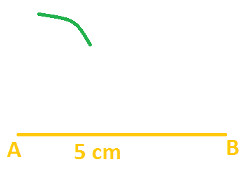
Step 3: Now again, with the help of compass and with B as center draw an arc of any convenient length which cuts previous arc, as shown below:
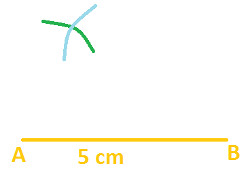
Step 4: The point at which both arc intersect is to be marked as C, as shown below:
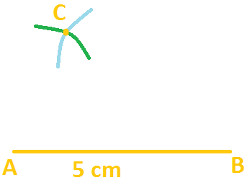
Step 5: Join points A and C, as shown below:
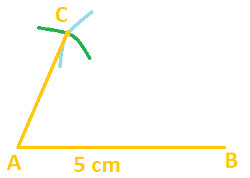
Step 6: Now, join points B and C, as shown below:
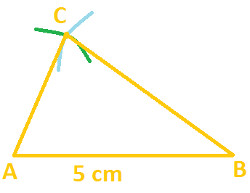
Step 7: With the help of ruler find length of AC & BC and we get:
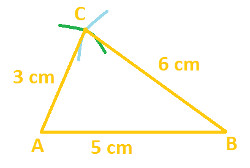
Now you can see that:
AB ↔ XY
BC ↔ YZ
CA ↔ ZX
So, on the basis above correspondence we get:
△ ABC ≅ △ XYZ
Hence, this proves SSS rule of Congruence which says:
If three sides of a triangle are equal to the three corresponding sides of another triangle; then both the triangle are said to be congruent.
Study More Solved Questions / Examples
Study the following diagram and show which triangles are congruent.
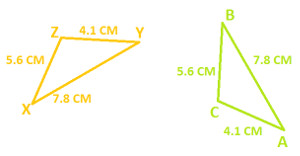 |
In the below diagram there are two triangles ABC and DEF.
AB = EF
BC = DF
AC = DE
Prove which of the following is true, explain.
△ ABC ≅ △ DEF
△ BAC ≅ △ FED
△ ABC ≅ △ EFD
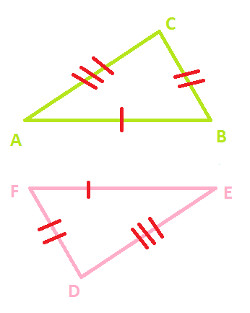 |
In the following quadrilateral:
PQ = QR,
PS = RS
Find is △ PQS ≅ △ RQS ? Explain in detail.
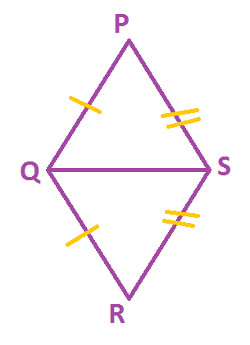 |
| | |






